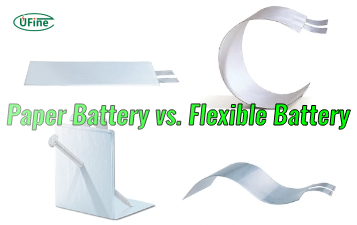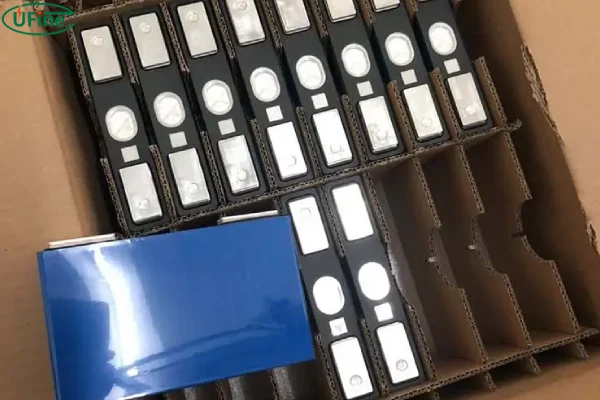Shipping lithium batteries can be challenging, but it’s essential to get it right. Improper packaging and shipping can lead to serious safety hazards, including fires and explosions. This guide will provide you with all the information you need to package and ship lithium batteries safely and comply with regulations. Let’s explore the best practices and methods to ensure your shipments are secure and legal.
Part 1. Why should you care about the packaging and shipping of lithium batteries?
Lithium batteries power many devices, from smartphones to electric cars. However, their high energy density and chemical composition make them potentially dangerous if improperly handled. Here’s why proper packaging and shipping are crucial:
- Safety: Incorrect handling can lead to short circuits, overheating, fires, or explosions. Proper packaging minimizes these risks.
- Regulatory Compliance: There are strict international and national regulations governing the transport of lithium batteries. Non-compliance can result in fines, shipment delays, or even bans on future shipping.
- Protection of Goods: Proper packaging protects the batteries from physical damage during transit, ensuring they arrive in good working condition.
- Reputation: Adhering to safety standards helps maintain a good reputation with customers and regulatory bodies.
Part 2. Lithium battery packaging methods
When it comes to packaging lithium batteries, there are several methods to consider. Each has its own pros and cons, and the best choice depends on your specific needs.
1. Original Packaging
Manufacturers design original packaging to fit the battery perfectly. This packaging often includes protective materials and is optimized for safe transport.
Pros:
- Maximum Protection: Designed specifically for the battery.
- Compliance: Often meets regulatory standards.
Cons:
Availability: Not always available if the battery is not new.
2. Specialized Battery Boxes
These boxes are designed specifically for transporting batteries. They include features like cushioning and insulation to protect the battery.
Pros:
- Excellent Protection: Built to handle the specific hazards associated with lithium batteries.
- Ease of Use: Often comes with instructions for safe packing.
Cons:
Cost: It can be more expensive than other methods.
3. Bubble Wrap and Cardboard Boxes
A more DIY approach involves wrapping the battery in bubble wrap and placing it in a sturdy cardboard box. This method can be effective if done correctly.
Pros:
- Cost-Effective: Generally cheaper than specialized options.
- Flexibility: Easy to source materials.
Cons:
- Variable Protection: Depends on how well the packaging is done.
- Time-Consuming: Requires more effort to ensure safety.
Part 3. What requirements should be met when packaging lithium batteries?
Packaging lithium batteries isn’t just about protection; it’s also about compliance with various regulations. Here are some key requirements and regulations to consider:
International Regulations
- IATA (International Air Transport Association): Governs air transport. Requires specific packaging, labeling, and documentation.
- IMDG (International Maritime Dangerous Goods): Sets standards for sea transport. Requires proper packaging, labeling, and documentation.
- UN (United Nations): Provides classification and packaging guidelines for hazardous materials, including lithium batteries.
National Regulations
- DOT (Department of Transportation): U.S. regulations for road and rail transport. Requires proper packaging, labeling, and documentation.
- ADR (European Agreement concerning the International Carriage of Dangerous Goods by Road): Governs road transport in Europe. Similar to DOT requirements.
Key Packaging Requirements
- Proper Labeling: Include hazard labels and handling instructions. Labels like “Lithium Battery” and “Cargo Aircraft Only” are often required.
- Strong Packaging: Use materials that can withstand shocks, pressure, and temperature changes. Non-conductive materials are ideal.
- No Short Circuits: Ensure batteries are protected against short circuits. This can include insulating terminals and separating batteries from conductive materials.
- Documentation: Include all necessary shipping documents. This often includes a declaration of dangerous goods and a packing list.
Part 4. What are the shipping methods for lithium batteries?
Shipping lithium batteries is subject to different requirements depending on the mode of transport. Here’s a breakdown of the main methods:
1. Air Shipping
Air shipping is the fastest way to transport lithium batteries but also the most regulated.
Requirements:
- Follow IATA Guidelines: This includes specific packaging, labeling, and documentation.
- Use Approved Packaging: Only use packaging that meets IATA standards.
- Declaration of Dangerous Goods: Include this in your documentation.
Pros:
- Speed: Fastest shipping method.
- Global Reach: Ideal for international shipments.
Cons:
- Cost: More expensive due to stringent regulations.
- Strict Regulations: Requires meticulous compliance.
2. Sea Shipping
Sea shipping is suitable for large shipments and is less expensive than air shipping.
Requirements:
- Follow IMDG Code: Adhere to the International Maritime Dangerous Goods regulations.
- Proper Packaging: Ensure the packaging can withstand the harsh conditions of sea transport.
- Documentation: Include the necessary shipping documents, like the dangerous goods declaration.
Pros:
- Cost-Effective: Cheaper for large shipments.
- Capacity: Can handle large volumes.
Cons:
- Slower: Longer transit times compared to air shipping.
- Limited to Coastal Areas: Requires additional logistics for inland transport.
3. Ground Shipping
Ground shipping is ideal for domestic transport and offers a balance between cost and speed.
Requirements:
- Comply with DOT Regulations: Follow the Department of Transportation guidelines.
- Labeling and Packaging: Use strong, clearly labeled packaging.
- Documentation: Ensure all required documents are included.
Pros:
- Cost-Effective: Affordable for smaller shipments.
- Flexibility: Good for both short and long distances within the same country.
Cons:
- Transit Time: Slower than air shipping but faster than sea shipping.
- Regulations: Must comply with national and regional regulations.
Part 5. Which packaging and shipping way should I choose?
Choosing the right packaging and shipping method for lithium batteries depends on several factors, including urgency, budget, and volume. Here’s a quick guide to help you decide:
1. Urgency
- High Urgency: If you need to get the batteries delivered quickly, air shipping is the best option despite its higher cost.
- Moderate Urgency: Ground shipping offers a good balance between speed and cost for domestic deliveries.
- Low Urgency: For non-urgent, large shipments, sea shipping is the most cost-effective choice.
2. Budget
- High Budget: Air shipping provides speed and convenience but comes at a higher cost.
- Moderate Budget: Ground shipping is cost-effective and offers reasonable transit times.
- Low Budget: Sea shipping is the most economical for large, non-urgent shipments.
3. Volume
- Small Shipments: Air or ground shipping is suitable for smaller volumes.
- Large Shipments: Sea shipping handles large volumes economically.
4. Regulatory Compliance
Always ensure that your packaging and shipping methods comply with the relevant regulations. This includes proper labeling, using approved packaging materials, and including all necessary documentation.
5. Summary
- For Urgent Deliveries: Choose air shipping, but be prepared for higher costs.
- For Large Shipments: Sea shipping is cost-effective but slower.
- For Domestic Shipping: Ground shipping balances cost and speed.
Always prioritize safety and compliance. Regularly check for updates to regulations to ensure your shipments remain compliant.
By following this guide, you can ensure safe and compliant packaging and shipping of lithium batteries. Whether you choose air, sea, or ground shipping, the key is to adhere to all regulations and use the appropriate packaging methods. This not only protects the batteries but also ensures the safety of everyone involved in the shipping process.
Related Tags:
More Articles

Paper Battery vs. Flexible Battery: What’s the Difference and Which Is Better?
Paper vs. flexible batteries: learn the key differences, benefits, and which power source fits best for wearables, sensors, and smart tech.
What to Know Before Buying a Tiny LiPo Battery for Your Project
Tiny LiPo batteries are powerful and compact. Learn how to choose the right one for your project with specs, safety, and charging tips.
Bloated LiPo Battery: Will It Explode?
Will a bloated LiPo battery explode? Discover the causes, risks, safety steps, and expert tips to avoid disaster and protect your gear. Must-read safety guide!
12V 100Ah Lithium Ion Battery Price: Full Guide
Learn about 12V 100Ah lithium-ion battery price, from cost ranges to best brands, hidden fees, and how to get the best deal. A must-read for smart buyers!
Resistance and Conductivity: What It Means for Your Lithium Batteries
Resistance and conductivity impact lithium battery performance, lifespan, and safety—learn how they work and why they matter.








